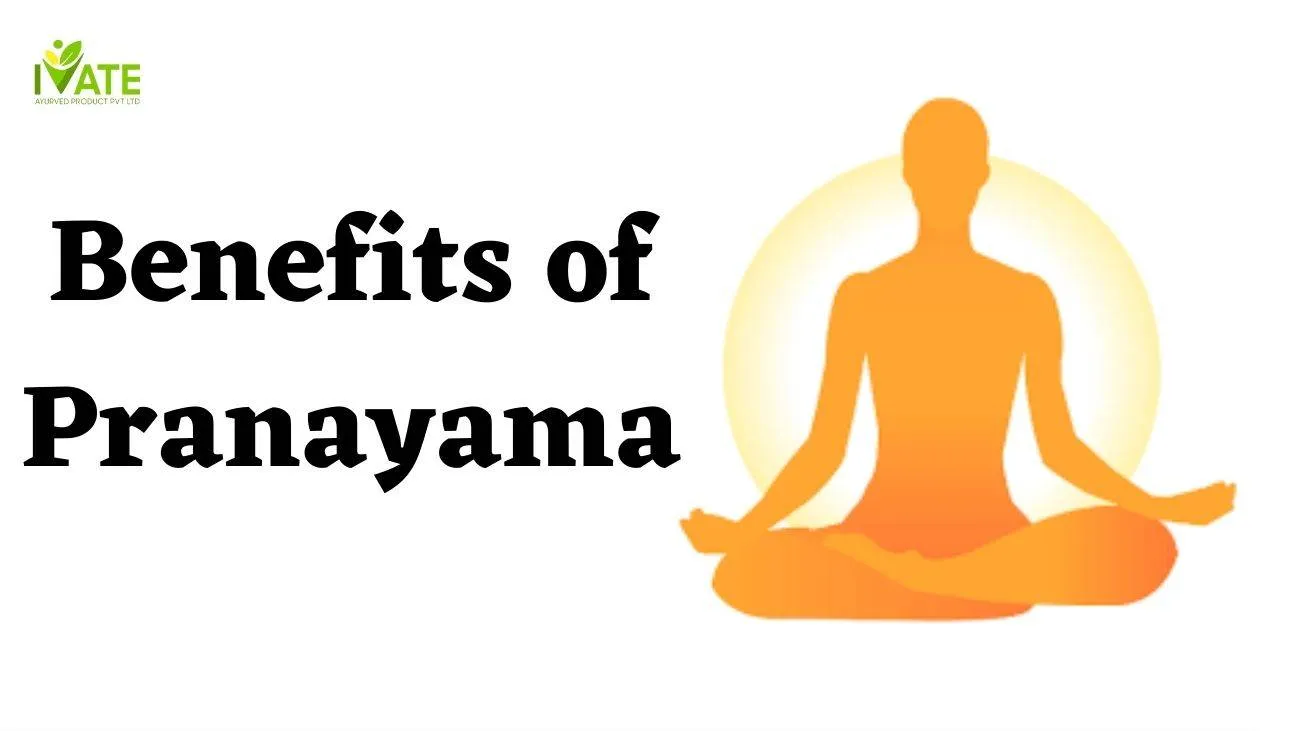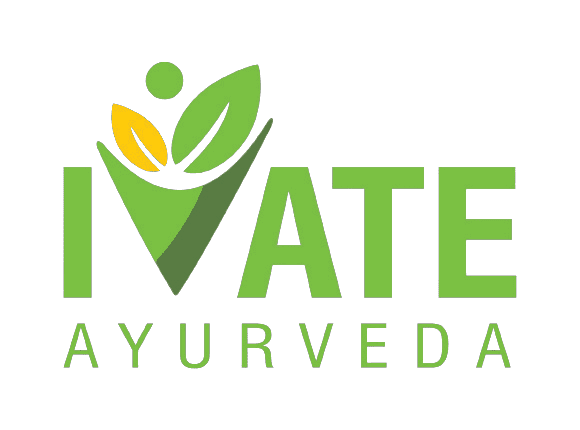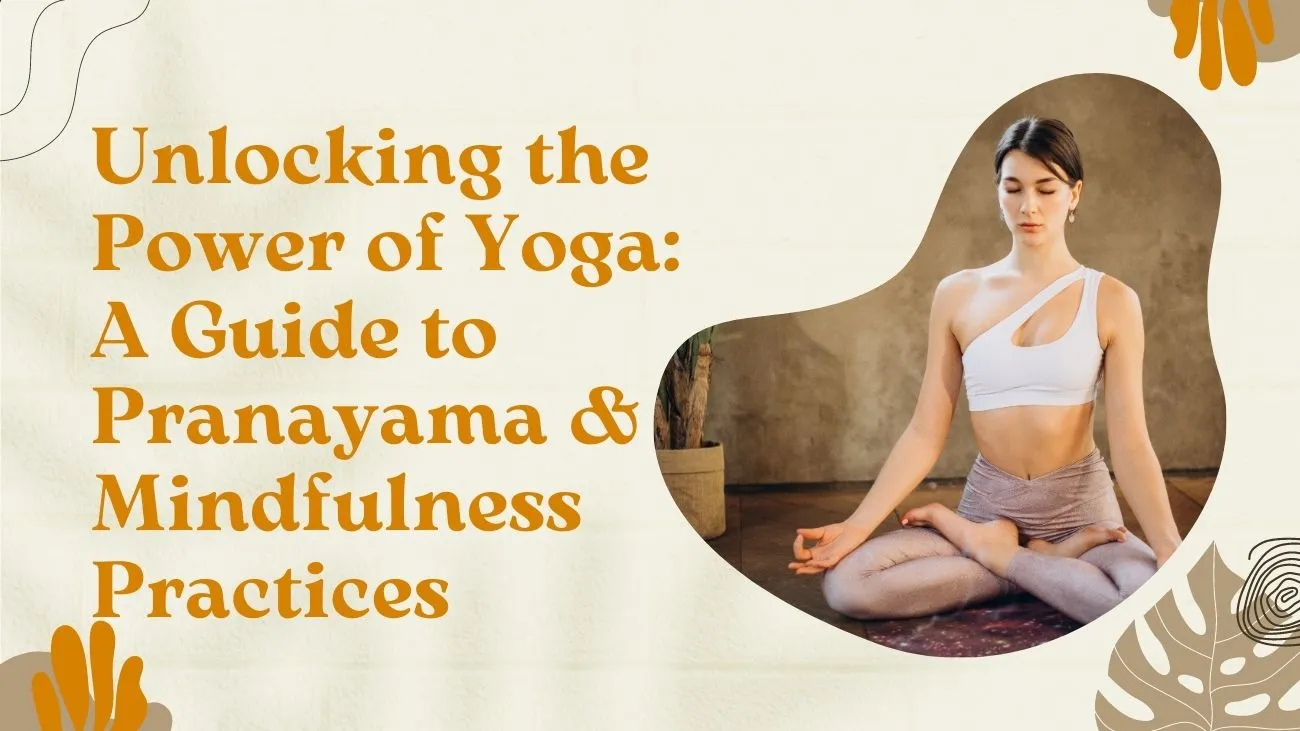Unlocking the Power of Yoga: A Guide to Pranayama & Mindfulness Practices
Yoga is an ancient practice that originated in India thousands of years ago. The word “yoga” comes from the Sanskrit word “yuj,” which means to unite or join. Yoga is a holistic practice that involves physical postures, breathing exercises, meditation as well as mindfulness practices. In this blog, we will explore the brief history and philosophy of yoga, types of yoga, basic yoga poses, different types of pranayama, benefits of pranayama, meditation and mindfulness, benefits of meditation, mindfulness practices, yoga for specific needs, starting yoga practices, tips for practicing yoga, key takeaways, and conclusion.
Brief History and Philosophy of Yoga
Yoga has a rich history that dates back thousands of years. It is believed that yoga was first mentioned in the ancient Hindu scriptures called the Vedas. Yoga was developed to achieve spiritual enlightenment and union with the divine. The philosophy of yoga is based on the idea that the mind, body and spirit are interconnected and that by practicing yoga, we can achieve balance and harmony within ourselves.
Types of Yoga
There are many different types of yoga, each with its own unique focus and benefits. Some of the most popular types of yoga include:
- Hatha Yoga: This gentle form of yoga focuses on basic yoga poses and breathing exercises. It is a great option for beginners.
- Vinyasa Yoga: This is a more dynamic form of yoga that involves flowing from one pose to the next. It is great for building strength and flexibility.
- Ashtanga Yoga: This is a more intense form of yoga that involves a set sequence of poses. It is great for building both the strength and stamina.
- Bikram Yoga: This is a form of yoga that is practiced in a heated room. It is great for detoxifying the body and improving flexibility.
- Restorative Yoga: This is a gentle form of yoga that involves holding poses for an extended period of time. It is great for reducing stress and promoting relaxation.
Basic Yoga Poses
There are many basic yoga poses which are great for beginners. Some of the most popular basic yoga poses include:
- Mountain Pose: This is a standing pose that promotes good posture and balance.
- Downward-Facing Dog: This is a pose that stretches the back, hamstrings and also the calves.
- Warrior II: This is a standing pose that strengthens the legs and improves balance also.
- Tree Pose: This is a standing pose that improves balance and strengthens the legs.
- Child’s Pose: This is a relaxing pose that helps to reduce stress and promote relaxation.
Different Types of Pranayama
Pranayama is a set of breathing exercises that are often practiced in yoga. There are many different types of pranayama, each with its own unique benefits. Some of the most popular types of pranayama include:
- Ujjayi Breathing: This is a deep breathing technique that is often used in yoga. All in all, it helps to calm the mind and reduce stress.
- Kapalbhati Breathing: This is a breathing technique that involves forceful exhalations because it is great for detoxifying the body and improving lung function.
- Nadi Shodhana Breathing: This is a breathing technique that involves alternate nostril breathing. As a result, it reduces stress and promotes relaxation.

Benefits of Pranayama
Pranayama has many benefits for both mental and physical health. Some of the most notable benefits of pranayama include:
- Reduced stress and anxiety
- Improved lung function
- Detoxification of the body
- Improved circulation
- Improved digestion
Meditation and Mindfulness
The practice of meditation and mindfulness often goes hand in hand.
Meditation involves focusing the mind on a particular object, thought, or activity to achieve a calm and clear state of mind. Mindfulness not only involves being fully present and aware in the current moment but without judgment or distraction. Both practices can help to reduce stress, improve mental clarity, and promote a sense of calm and inner peace.
Benefits of Meditation
Meditation has many benefits for both mental and physical health. Some of the most notable benefits of meditation include:
- Reduced stress and anxiety
- Improved focus and concentration
- Increased self-awareness
- Improved sleep
- Reduced symptoms of depression
Mindfulness Practices
There are many different mindfulness practices which can be incorporated into daily life. Some of the most popular mindfulness practices include:
- Mindful breathing: This involves focusing on both, the breath and being fully present in the current moment.
- Mindful eating: This involves being fully present and aware while eating, savoring each bite and enjoying the sensory experience of eating.
- Mindful walking: This involves being fully present and aware while walking, paying attention to each step and the sensory experience of walking.
Yoga for Specific Needs
Yoga can be beneficial for a wide range of health conditions and needs. Some of the most common conditions that yoga can help with include:
- Anxiety and stress
- Depression
- Insomnia
- Chronic pain
- Digestive issues
- Arthritis
Starting Yoga Practices
If you’re new to yoga, it’s equally important to start slowly and gradually build up your practice over time. Here are some tips for starting yoga practices:
- Start with a gentle form of yoga, such as hatha yoga.
- Also, attend a beginner’s yoga class to learn the basics.
- Invest in a good quality yoga mat and comfortable clothing.
- Above all set aside a dedicated time and space for your yoga practice.
- Listen to your body and don’t push yourself beyond your limits.

Tips for Practicing Yoga
Here are some tips for practicing yoga safely and effectively:
- Warm up before practicing yoga to avoid injury.
- Another key point is to always listen to your body and don’t push yourself beyond your limits.
- Breathe deeply and fully throughout your yoga practice.
- As a matter of fact, practice yoga regularly to see the most benefits.
- First, work with a qualified yoga teacher to ensure proper alignment and technique.
Key Takeaways
- Yoga is an ancient practice that involves physical postures, breathing exercises, meditation and mindfulness practices.
- There are many different types of yoga, each with its own unique focus and benefits.
- Pranayama is a set of breathing exercises that are often practiced in yoga and have many benefits for both mental and physical health.
- Meditation and mindfulness practices can equally enhance the benefits of yoga and promote a sense of calm and inner peace.
- Yoga certainly can be beneficial for a wide range of health conditions and needs.
- Starting slowly and practicing regularly is critical to a safe and effective yoga practice.
Conclusion
Yoga is a powerful tool for promoting health and wellness in both the mind and body. By incorporating yoga into your daily routine, you can reduce stress, improve mental clarity, and promote overall well-being. Whether you’re a beginner or an experienced practitioner, there’s always something new to learn and explore in the world of yoga. So why not give it a try and see what benefits it can bring to your life?
FAQ A Guide to Pranayama & Mindfulness Practices
What is pranayama, and how does it relate to yoga?
Ans: Pranayama is a Sanskrit term, but young people nowadays don’t take good care of their own health, despite the fact that it’s crucial for survival. Yoga is the best way to stay healthy.
How can pranayama enhance my yoga practice?
Ans: By sharpening your awareness of the breath and its relationship to the present moment, pranayama practises can significantly improve your yoga practise. Pranayama is a technique that uses focused breathing to improve the body’s energy flow, quiet the mind, and improve concentration. Additionally, it encourages the release of emotional and physical stress, enabling a deeper and more transformative yoga practise.
What are the benefits of incorporating mindfulness practices into yoga?
Ans: Mindfulness practises include cultivating nonjudgmental awareness and remaining fully present in the present moment. When paired with yoga, mindfulness can boost the benefits of the practise. By building a deeper connection between the mind and body, mindfulness reduces stress, promotes mental clarity, increases self-compassion, and improves overall emotional well-being. It also boosts feelings of gratitude and contentment.
Can anyone practice pranayama and mindfulness, regardless of their yoga experience?
Ans: Yes, without a doubt! Individuals of all yoga levels, from beginners to advanced practitioners, can benefit from pranayama and mindfulness practises. These practises can be changed and adapted to meet the needs and abilities of each individual. It is critical to approach them with care and respect for your body’s limitations, gradually expanding your practise over time under the supervision of an experienced teacher or through dependable resources.
Are there any precautions or contraindications to consider when practicing pranayama and mindfulness?
Ans: While most individuals find pranayama and mindfulness practises to be safe, it is important to use caution if you have any medical issues. Before beginning pranayama exercises, it is essential to speak with a healthcare provider if you have any health concerns, including respiratory or cardiovascular disorders. Additionally, it is advised to cease practising and seek advice from a certified instructor if you feel queasy, uncomfortable, or have any other negative responses.



